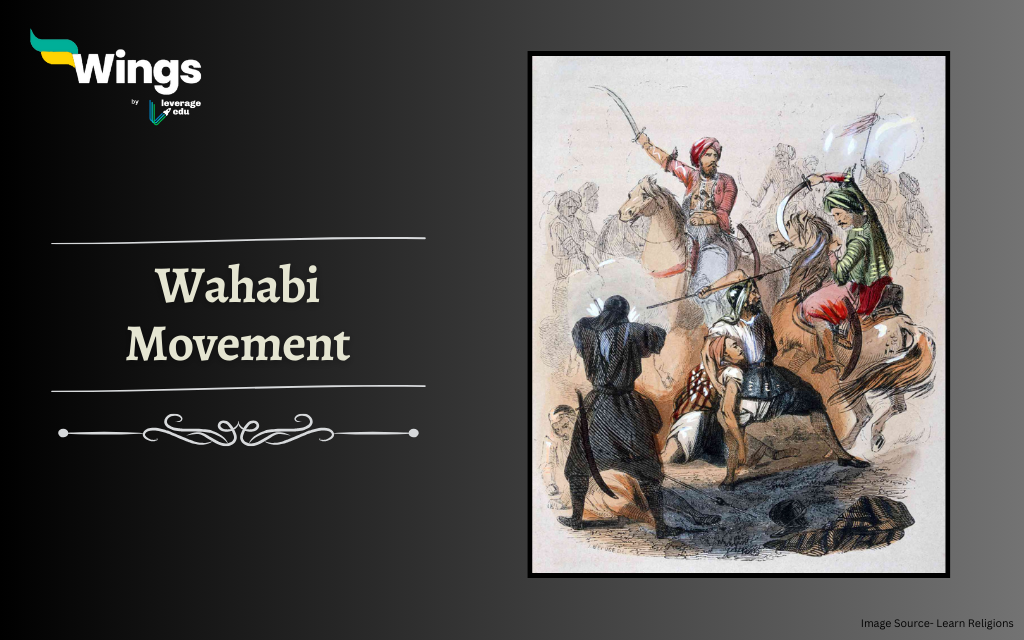The Wahabi Movement in India has long been a topic of interest and debate among historians and scholars. It was founded by Sayyid Ahmad as a socio-religious movement in Rae Bareli, India, at the beginning of 1820. This influential religious and political movement emerged in the early 19th century, aiming to revive and propagate the principles of Wahabbism in the Indian subcontinent. In this article, we delve into the history of the Wahabi Movement, its objectives, the impact it had on India, and its eventual suppression.
Contents
| Overview | Details |
| Founder of Movement in India | Sayyid Ahmad |
| The Wahabi Revolt started In | Early 1820’s |
| The Wahabi Revolt ended In | 1870 |
History of the Wahabi Movement
The movement was seen as a revivalist movement, which was a result of the influence of Westernization on Islamic customs and traditions. The main aim of this movement was to bring back the traditional and original practices of Islamic civilization that were prevalent in Arabia during the Prophet’s time.
Emergence of the Movement:
- The Wahabi Movement traces its roots back to the teachings of Mohammad ibn Abd al-Wahhab in 18th-century Arabia.
- It gained momentum in India during the late 18th and early 19th centuries.
- The teachings of important Islamic scholars like Abdul Aziz and Sayyid Ahmad inspired the followers of Wahabbism in India.
- Sayyid was highly influenced by the teachings of Abdul Wahab of Arabia.
Also Read – Brahmo Samaj: Founder, History, Significance
Objective of the Movement:
- The primary objective of the Wahabi Movement was to purify and reform Islam.
- The movement aimed to eliminate what they considered to be religious innovations and practices contrary to their understanding of pure Islam.
- Rejection of Sufi practices, veneration of saints, and emphasis on strict adherence to the Quran and Hadith were significant aspects of the Wahabi ideology.
Wahabbism in India
The individuals were expected to make Islam their understanding not just follow it blindly. Spread of Wahabbism:
- The movement gained traction in the provinces of Bengal, Bihar, and Punjab.
- Wahabi missionaries spread their teachings through sermons, writings, and personal interactions.
- Educational institutions known as madrasas played a crucial role in disseminating Wahabi beliefs.
Also Read – Arya Samaj: History, Founder, Features, Significance
Impact on Indian Society:
- The Wahabi Movement had significant implications for Indian society, especially within the Muslim community.
- It strengthened the Islamic identity and encouraged religious fervour among its followers.
- The Wahabi ideology propagated social equality, the abolition of caste-based discrimination, and emphasized the importance of education.
Also Read: 20+ Greatest Indian Freedom Fighters and their Sacrifices
Wahabi Revolt: Anti-Sikh and Anti-British Movement
The Movement was a socio-religious movement which was against the Sikhs in Punjab. Sayyid Ahmad led the Movement and started a practice of Jihad against the people who were Punjabi Sikhs. He published an anti-Sikh booklet called Targhiz-ul-Jihad to support the Movement. The Movement caused Ranjit Singh, who was the ruler of Punjab, to be overthrown due to the hate it generated. The Movement then turned its attention to the East India Company’s supremacy. However, the British were able to suppress the Movement after the Revolt of 1857 took place.
Revolt Against the Sikhs:
- The Wahabi Movement played a pivotal role in the resistance against Sikh rule in Punjab.
- Syed Ahmad Barelvi, a prominent leader of the movement, organised armed campaigns against the Sikh forces.
- However, the revolt was ultimately suppressed in the Battle of Balakot in 1831, resulting in the martyrdom of Syed Ahmad Barelvi.
Also Read – Popular Struggles and Movements
Challenge to British Supremacy:
- The Wahabi Movement also posed a challenge to British dominance in the Indian subcontinent.
- The British perceived the movement as a threat to their political and economic interests.
- They suppressed the movement through military action and strategic alliances with local rulers who were opposed to the Wahabis.
Also Read: Indian National Movement: Timeline for UPSC, PDF
Suppression of the Wahabi Movement
Syed Ahmad Barelvi and Shah Abdul Aziz tried to turn the movement into a political crisis. They considered India as a land of Kafirs (Dar-ul-Harb), before the movement and wanted to change it to Dar-ul-Islam i.e. into an Islamic land. But the movement was soon suppressed.
Military Action:
- The British employed military force to quell the Wahabi uprising in the 1860s.
- British forces launched multiple campaigns against Wahabi strongholds in India.
- These military operations ended with the capture and execution of key Wahabi leaders, thus curbing the influence of the movement.
- In two years i.e. from 1863 to 1865, Wahabis were arrested in several trials like the Ambala trial of 1864 and the Patna trial in 1864.

Political and Socio-economic Measures:
- The British colonial administration introduced several measures to weaken the Wahabi Movement.
- They imposed restrictions on the establishment and management of madrasas, limiting the dissemination of Wahabi teachings.
- Economic policies were implemented to curtail the financial resources of the movement, weakening its organizational structure.
- The Movement lost its importance in the 1870s.
While the movement aimed to reform Islam and eradicate perceived deviations from pure Islamic principles, the movement faced immense challenges from both Sikh and British forces. Despite its eventual suppression, the Wahabi Movement’s legacy continues to be studied and discussed, shedding light on the socio-religious dynamics of 19th-century India.
Relevant Blogs
| Nehru Report 1928 | Chandra Shekhar Azad |
| The First Round Table Conference,1930 | Poona Pact |
| What was the Sarkaria Commission? | Indigo Rebellion |
| Rajguru | Kheda Satyagraha |
This blog was all about the Wahabi Movement. Stay informed about Indian history and broaden your general knowledge with our dedicated section.
 One app for all your study abroad needs
One app for all your study abroad needs














